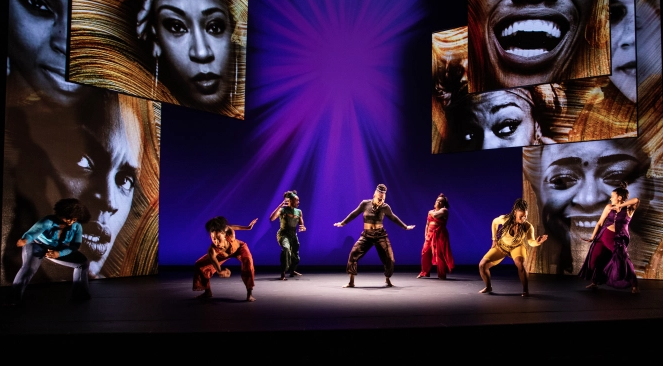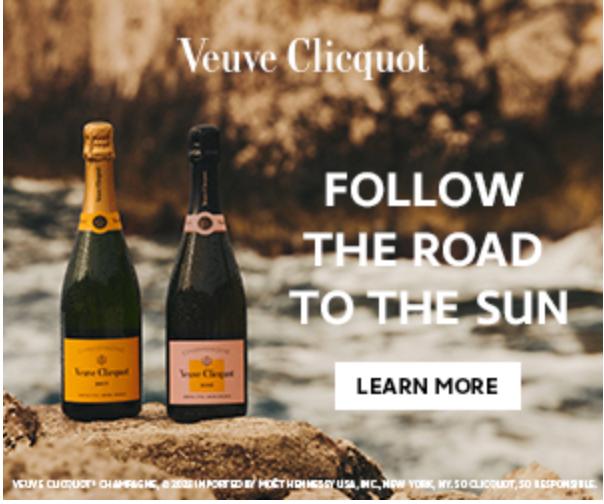Broadway’s Tony Nominated ‘For Colored Girls…’ Announces Extension to June 5
Three weeks are left to experience one of the best reviewed plays of 2022, the critically acclaimed and reimagined Broadway revival of Ntozake Shange’s groundbreaking for colored girls who have considered suicide/ when the rainbow is enuf, directed and choreographed by Tony Award nominee Camille A. Brown (Once On This Island, Choir Boy, co-director and choreographer of Fire Shut Up in My Bones). The production will play its final performance on Sunday, May 22 at the Booth Theatre (222 West 45th Street).
Tickets are on sale for the show’s final weeks at www.telecharge.com. Discounted tickets are now available to students who present a valid Student ID at $25 per ticket.
for colored girls… is Camille A. Brown’s directorial debut on Broadway. She is the first Black woman to serve as both director and choreographer on Broadway in more than 65 years, bringing a reinvented, joyful and celebratory production of Shange’s seminal work back to its original home at the Booth Theatre, where the play premiered in 1976.
for colored girls… has received three Drama League Award nominations including Outstanding Revival of a Play, Outstanding Direction of a Play – Camille A. Brown and Distinguished Performance Award – Kenita R. Miller. The production has also received three Outer Critics Circle Award nominations including Outstanding Revival of a Play, Outstanding Director of a Play – Camille A. Brown and Outstanding Choreography – Camille A. Brown.
Related:
High Line Art announces 2022 season of exhibitions for High Line Channels Featuring works by Kevin Jerome Everson, Ilana Harris-Babou, Jasmina Cibic, Cheng Ran
“From African influence to HBCU stepping, Brown’s choreography is a forensic amalgamation of styles that shows all forms of Black dance should be considered tribal in origin,” described Matthew Allen of The Grio.
“Brown’s staging is so attuned to the words and cadences of Shange’s choreopoem, yet so confident in its own interpretive vision, that the characters blossom into their full vibrancy,” praised Laura Collins-Hughes of The New York Times.
“We are so proud to have brought Ntozake Shange’s brilliant choreopoem back to Broadway after 46 years from its original premiere and to have had the opportunity to share Camille’s vision and masterful work with a sensational ensemble of women on stage at the Booth Theatre each night,” said producers Nelle Nugent, Ron Simons and Kenneth Teaton. “As Broadway continues to rebound, we knew it would be challenging and our goal remains to present these voices and introduce a new generation of audiences to the power of theatre and the power of Shange’s words.”
Join the circle as seven women share their stories and find strength in each other’s humor and passion through a fusion of music, dance, poetry and song that explodes off the stage and resonates with all. It’s time for joy. It’s time for sisterhood. It’s time for colored girls.
The cast stars Amara Granderson as Lady in Orange, Tendayi Kuumba as Lady in Brown, Kenita R. Miller as Lady in Red, Okwui Okpokwasili as Lady in Green, Stacey Sargeant as Lady in Blue, Alexandria Wailes as Lady in Purple, and D. Woods as Lady in Yellow. Rachel Christopher, Treshelle Edmond, McKenzie Frye, Kala Ross and Alexis Sims join the company as standbys and understudies.
for colored girls… features set design by Myung Hee Cho, costume design by Sarafina Bush, lighting design by Jiyoun Chang, sound design by Justin Ellington, projection design by Aaron Rhyne, and hair & wig design by Cookie Jordan. The show features original music by Martha Redbone and Aaron Whitby. Deah Love Harriott serves as the Music Director and Tia Allen is the Music Coordinator. The Production Stage Manager is Bernita Robinson and the Assistant Stage Manager is lark hackshaw. The production features casting by Erica Jensen/Calleri Jensen Davis and production supervision by Hudson Theatricals. Christina Franklin serves as the Associate Director and Maleek Washington and Mayte Natalio serve as Associate Choreographers.
Black girl magic is reborn. Ntozake Shange’s for colored girls who have considered suicide/ when the rainbow is enuf is the “landmark of American theater” (The New York Times) that blazed a trail for generations to come. Now, this celebration of the power of Black womanhood returns to Broadway for the first time, reinvented, directed, and choreographed by “a true superstar of theater and dance” (NPR), Tony AwardÒ nominee Camille A. Brown. And her vision is as fearlessly new as it is fiercely now.
For more information, visit www.forcoloredgirlsbway.com.




Heard really good things about the show. Havent seen it 🙁